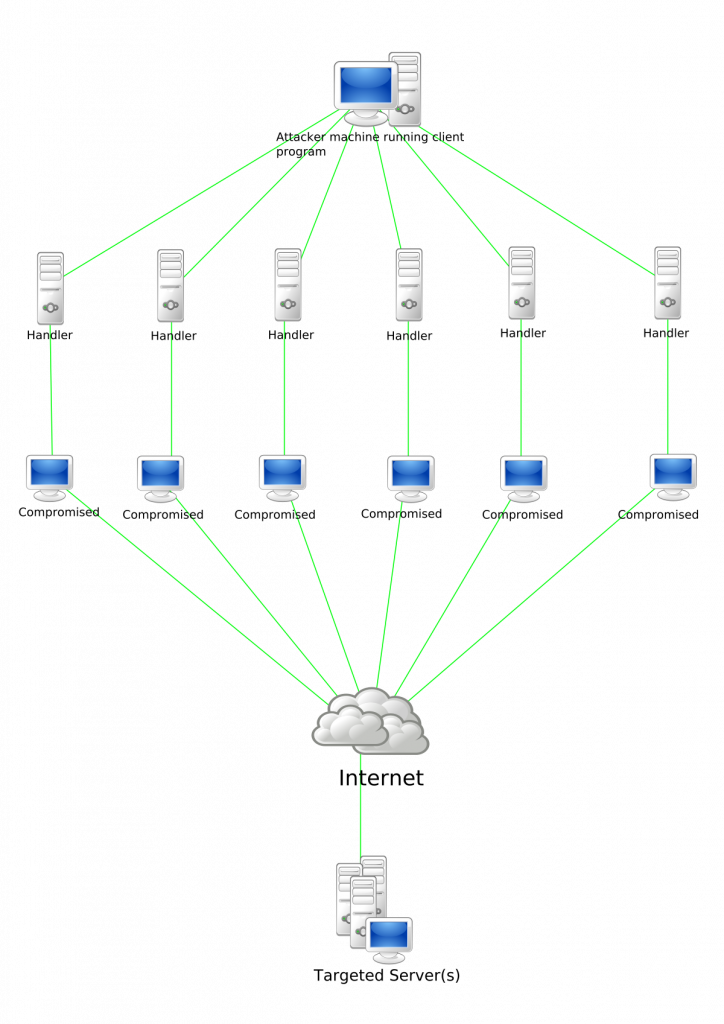Security is probably one of the most important aspects to running a business or even hosting a valuable business such as an ecommerce website. When our data is under attack, our reputation, appearance and even ability to fully function as a profit making company is under severe pressure. This is what happens when a DDoS Attack takes place.
What is a DDoS Attack? DDoS meaning
A DDoS Attack or a Distributed Denial of Service Attack is a type of attack that pauses or entirely stops users from accessing your website’s pages. During these types of attacks, visitors will be unaware that you are experiencing a DDoS Attack and simply assume that your website does not function properly; leaving them with a bad impression of your site.
DDoS Attacks aim at tarnishing your reputation as a brand, and do this by overloading the system and giving your users a hard time to access the pages they intend to on your website, if allowing them access at all. Users are usually met with very slow loading times, website crashes or irresponsive behaviour in general.
This happens because the nature of a DDoS Attack is to send multiple requests to the server, exceeding the capability limits; causing crashes that could last days or weeks, depending on the severity of the target.

What industries are targeted by DDoS Attacks?
It’s clear to say that no business is safe from a DDoS Attack, but in general ecommerce websites would be affected the worst in this scenario. The purpose of an ecommerce website is to generate profit through online sales, therefore with crashes and limited access to functional pages, users will not be able to finalise their transactions, hurting the company’s ROI in the long run.
But businesses that are on hackers’ radar are usually the bigger companies and industries that stand to lose as much as $20,000 an hour. Such companies include:
- Telecom companies: such as internet providers whose service interruptions will inhibit a multitude of users to have a disrupted service. Making ransom money seem like an easy solution to a multi-dollar company.
- Financial enterprises: such as banks whose limited services could lose them millions in investments per hour, this is when hackers would pounce and do their utmost to drain the bank’s reserve funds.
- Cryptocurrency apps: while investments are secure on the blockchain, apps such as Binance would not have the sort of encryption to deter a DDoS Attack of the sneakiest calibre. Every hour crypto apps lose in full running order will lose the company their profits in the form of percentages with every lost transaction.
- Technology hubs: tech is always in demand, so losing out on online sales could result in millions of dollars by the end of the week. When tech hubs are stifled, new launches, updates and other big tech factors are inhibited too.
- Ecommerce platforms: probably the platform that suffers most, while all the above restrict users’ capabilities on a website, ecommerce platforms are brought to a complete halt. This could destroy a website if not handled correctly.
- Government organizations: with their highly sensitive material and data, such high calibre infrastructures would need to stop the attack immediately before any leaks take place.
- iGaming websites: online casinos could lose quite a hefty sum of money should they experience a drop in website functionality. With 24/7 gaming taking place pretty much around the entire globe, not only will the casino lose money, but also be forced to provide bonuses for the players inconvenience, in hopes of retention.
- Aviation industries: when you cannot book on one airline, you simply move on to another – with the choice we’ve got on the market, this pretty much applies to every industry. And for an airline, this could result in unsustainable trips, cancelled flights and unhappy customers.
Who would initiate a DDoS Attack?
DDoS Attacks are pretty simple to launch if you understand the complexities of the online coding world. And since most high calibre companies are equipped with high ranking employees whose expertise in technological interpretations are pretty stellar, this sort of communication is as simple as the alphabet for the common man.
What we’re getting to with this is that a DDoS Attack is simple to launch, often goes unnoticed for a few hours or days and can be an easy target for competitors to instigate. Perhaps this is not the most common form of DDoS Attack, but when it’s not the hackers looking for some sort of financial gain from a company, it is generally a means by which competitors string users to their site when the attacked website is down or functioning poorly.
How to protect your company website from a DDoS Attack?
The main purpose of this blog is to give you the inside idea on how to best protect yourself from DDoS Attacks to give your business the security it needs to keep on servicing your users with 100% functionality.
At 4Sight we specialise in bringing you safe and secure solutions to keep your website as user-friendly and accessible as possible. Our expertise in understanding how to best provide our clients with premium online protection is what keeps our techy crew happy, mostly because our clients are safe from all the troubles and harms that can limit their functionality.
We can protect your company from DDoS Attacks in the following ways:
- Secure your Infrastructure
- Perform Vulnerability Network Assessments
- Use Cloud Based Service Providers
Look out for warning signs of DDoS Attacks and be sure to get in touch with 4Sight to make sure you’re properly set up and protected.

